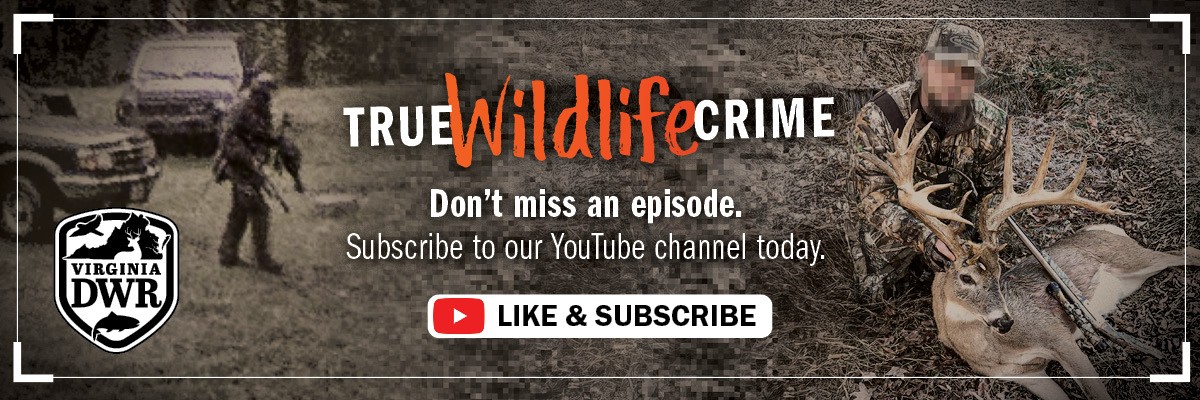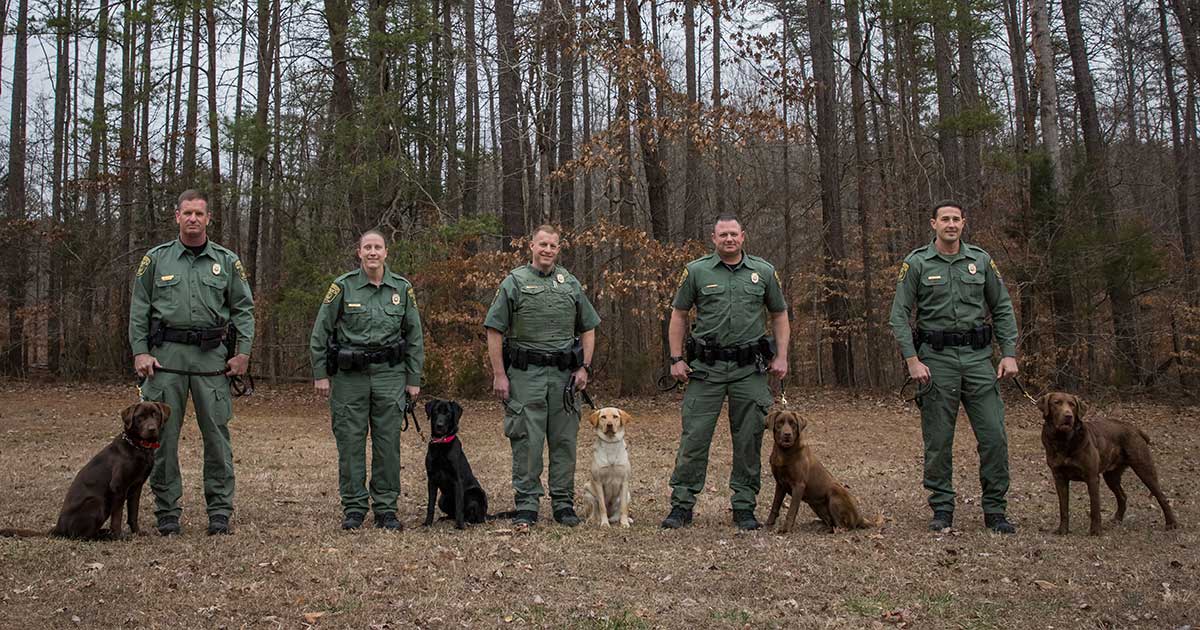
The five DWR K9 trainee pairs: (from left) Senior CPO Wes Billings and Molly, CPO Bonnie Braziel and Grace, Master CPO Mark Diluigi and Lily, CPO Ian Ostlund and Reese, and CPO Tyler Blanks and Bruno.
By Molly Kirk
Photos by Meghan Marchetti
“Grace was an absolute ball of fire when it came to tracking!” said Conservation Police Officer Bonnie Braziel of her first week training with K9 Grace. “On the first track I ran with her, when I told her to track, she took off like a slingshot right on the track line of the person we were tracking. It was really incredible to see her do, and she continued to do it all week.”
The five dogs and CPO handlers working toward becoming K9 Conservation Police Officers for the Virginia Department of Wildlife Resources (DWR) completed their first week of the DWR K9 Natural Resources Protection Training Program with enthusiasm. The five trainee pairs are aiming to join the DWR K9 program, which is supported by the Ward Burton Wildlife Foundation (WBWF). You can help by donating to the Caring for the CPO K9s Fund through the WBWF! Your donation will go to veterinary care, maintenance costs, and training for the K9 CPOs.
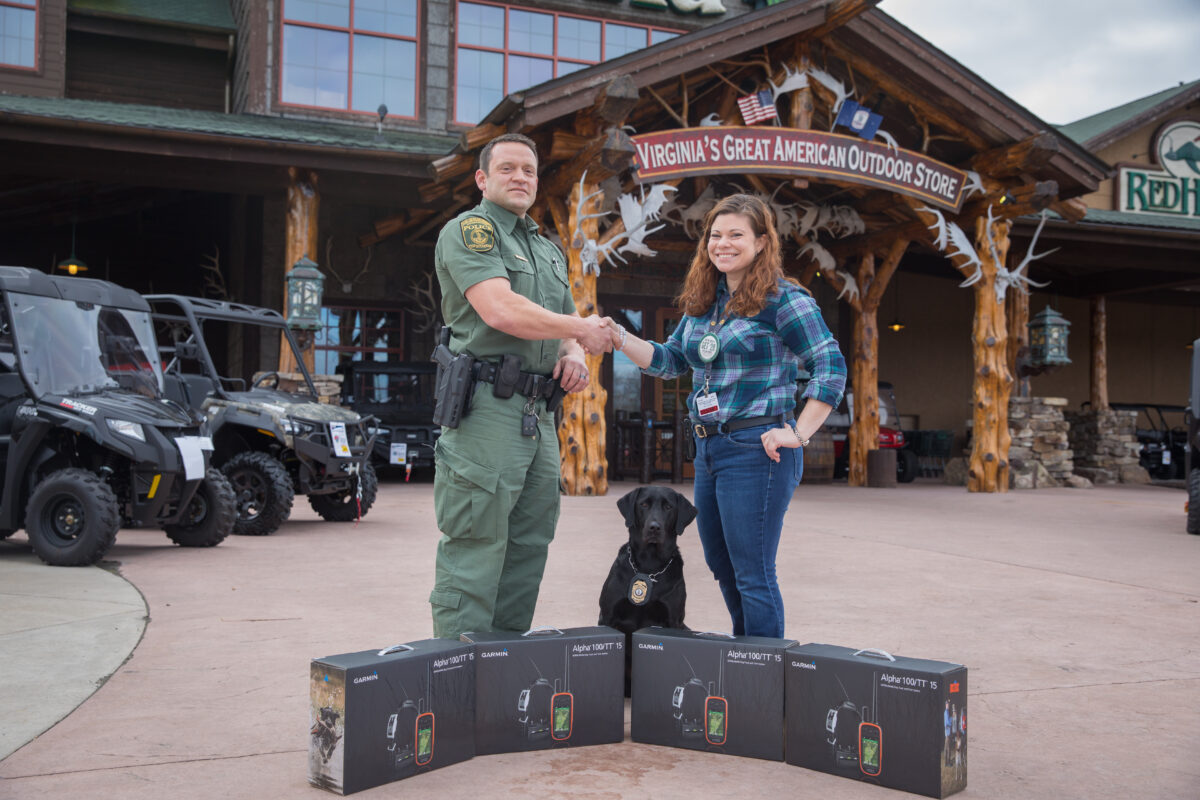
Bass Pro Shops’ Ashland, Virginia, location generously donated GPS tracking collars for all the new K9 trainees. CPO James Patrillo (left) and K9 CPO Bailey accepted the donation from Bass Pro Shops representative Dani Costa (right).
The handlers completed classroom coursework covering canine behavior, how dogs learn, and how dogs track odors. They also learned about odors themselves—how odor is left scientifically, how different surfaces such as grass, concrete, asphalt, and more affect how odor is left, and how dogs interpret odors.
In the field, the dogs and handlers worked on the basics of tracking skills, both in straight lines and in straight lines with a 90-degree turn. “What we’re doing now is known tracks, where the handler knows where the track is and can correct the dog,” said Master CPO Mark Diluigi of his process with the yellow Lab Lily. “Later we’ll run unknown tracks, where neither the dog nor the handler knows where the track is. Right now is about us reading and understanding your dog. Each dog has slightly different cues that it gives when it’s tracking.
“I’d never run behind a dog before,” Diluigi said. “Bruno is a big, powerful dog, whereas Lily is nice and soft and sweet and just trots a bit. I had to learn what amount of pressure to use on the lead and how to read the dog. You have to be able to understand when they’re tracking and when they’re not. When they’re not tracking, you’ve got to get them back to the track. And it’s all about how much pressure you have on the lead, and how much the dog will withstand. It was a huge learning curve for me, because I’ve never done anything like this. It was very rewarding, because at the end of the week, I was like, ‘OK, I’m feeling this now.’ I was seeing what she was doing.”
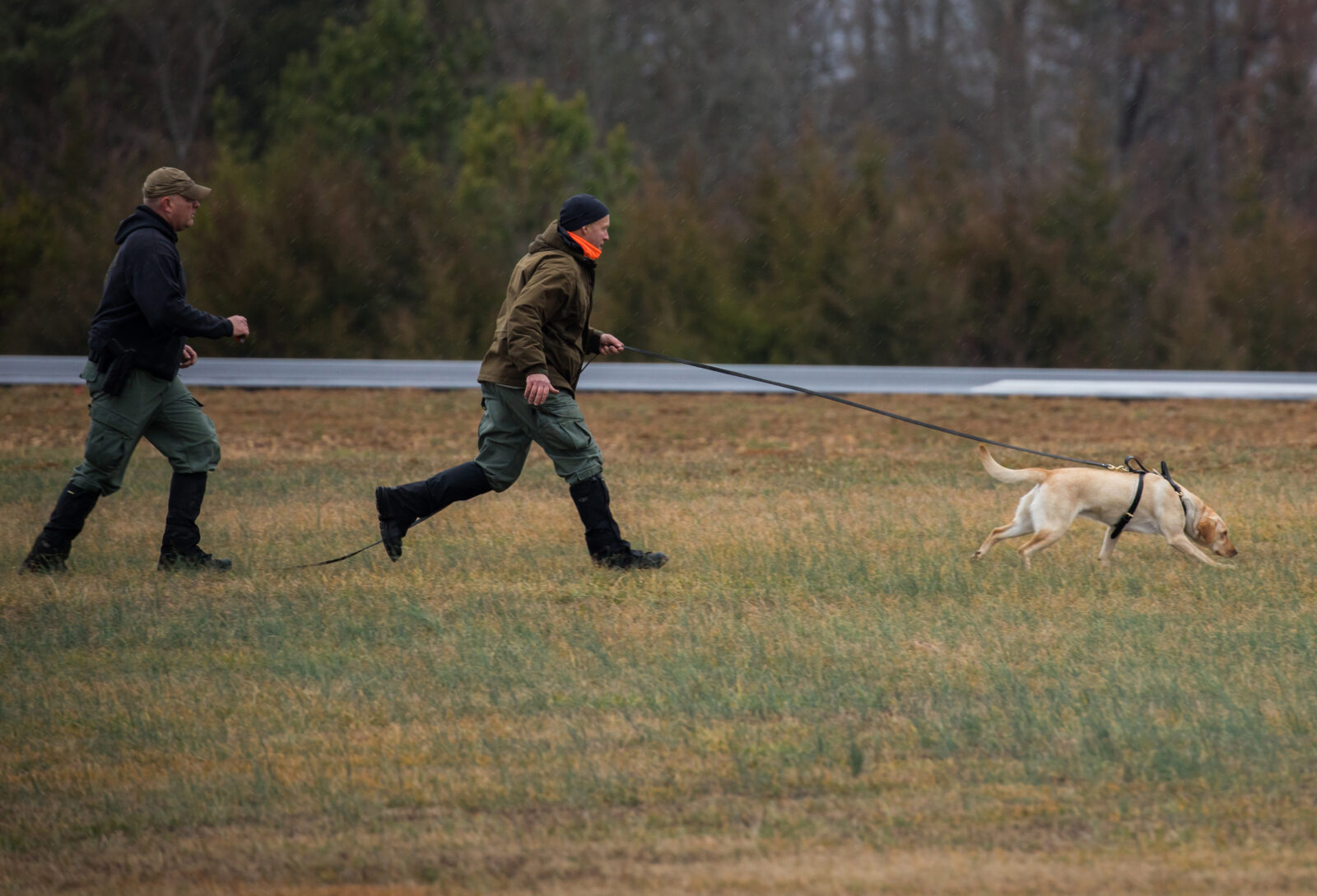
Veteran K9 handler and Senior CPO Richard Howald (left) coached Master CPO Mark Diluigi and Lilly through a tracking practice run.
The five trainee dog-and-handler pairs will work on their skills and bond through the end of April, and the dogs meeting the standard will graduate as K9 CPOs on May 8. Everyone signed up for the K9 training newsletter is entered for a random drawing for 25 lucky people to attend a special DWR K9 CPO training session and meet-and-greet with the dogs!
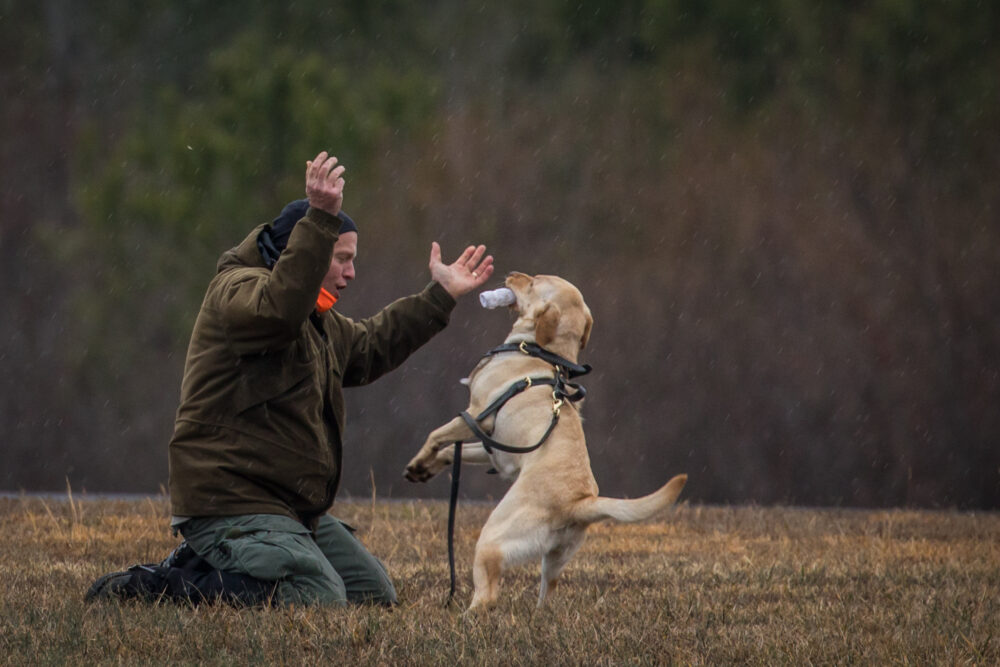
Master CPO Mark Diluigi rewards Lily after a successful tracking exercise.
What’s Lily’s motivation to learn? “She loves love,” Diluigi said. “Every dog is different, and you have to figure out what motivates your dog. Some dogs like to play, and some dogs want to know they did a good job. We try to get all the dogs to play tug as a reward. What really motivates Lily and lets her know she did a good job is pats on the head, some good rubs, and a lot of love.”
Diluigi noted that Lily started the week a bit confused about what was being asked, but learned quickly. “From when we started to at the end of the week, she was like, ‘I got this. I know what my job is. My job is to follow this track,’ ” Diluigi said. “Her confidence built as we went on and you could see her think, ‘I know the game now, let’s have some fun.’ ”
Lily’s early obedience training before she joined the DWR K9 program taught her to give to leash pressure, but in tracking training, the dogs need to lean into the lead. While tracking, handlers communicate with the dogs through differing pressure on the lead. “Lily will pull, but if you give her too much pressure back, she’ll revert back to her obedience training and back off,” said Diluigi. “I have to figure out how to balance that. We’re having a lot of fun. We’re both learning about each other. She’s excited to get out of the truck when it’s her turn.”
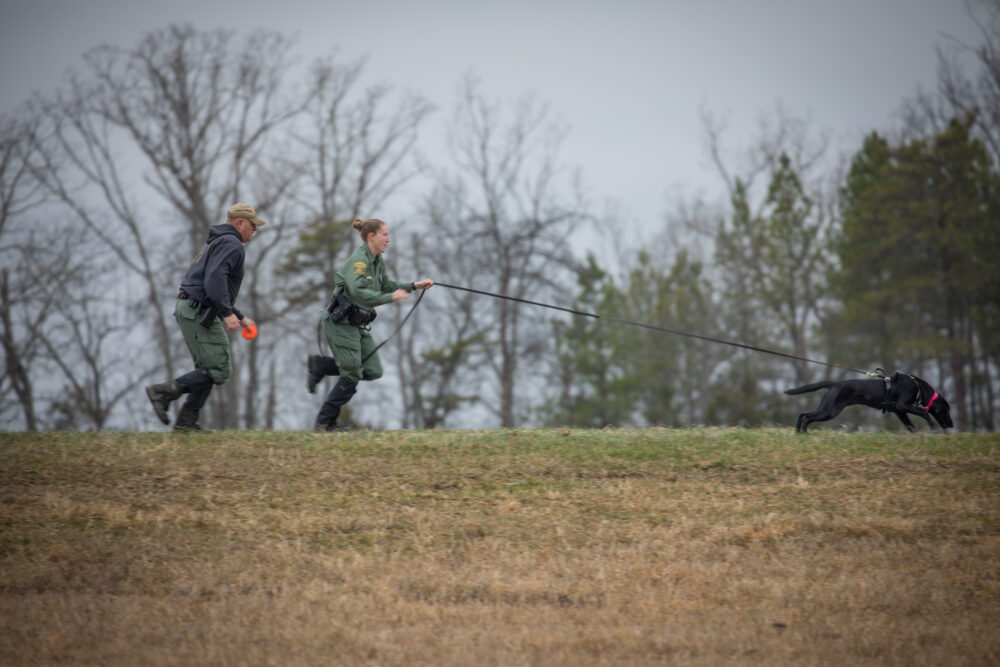
CPO Bonnie Braziel (center) worked on lead control and pressure while tracking with Grace under instructor Senior CPO Richard Howald’s guidance.
Braziel was amazed at how quickly Grace took to the tracking training. “Grace was a rockstar!” She said. “She was born for this job. Her natural ability to track is mind-blowing to me.”
And Braziel learned a lot about everything that goes into a dog tracking successfully. “So many factors go into a successful track for you and your partner—wind direction, time of day, weather, what the suspect is wearing, etc. Knowing the best conditions for your dog to perform in is so important. I learned a lot of the ‘why’ behind things. Grace learned that her mom has a lot of work to do to be the best handler for her. I need to continue to work on lead control and pressure, reading Grace when she is in profile and tracking, and when she is not so that I can get her back on track. This is a very complicated process, but over time I feel confident that Grace and I will perform well!”
Even though she’s a petite and slight dog, Grace is a powerhouse while tracking. “Grace’s sheer power really surprised me. When she gets going on a track line, you’d better hold on!” Braziel said.
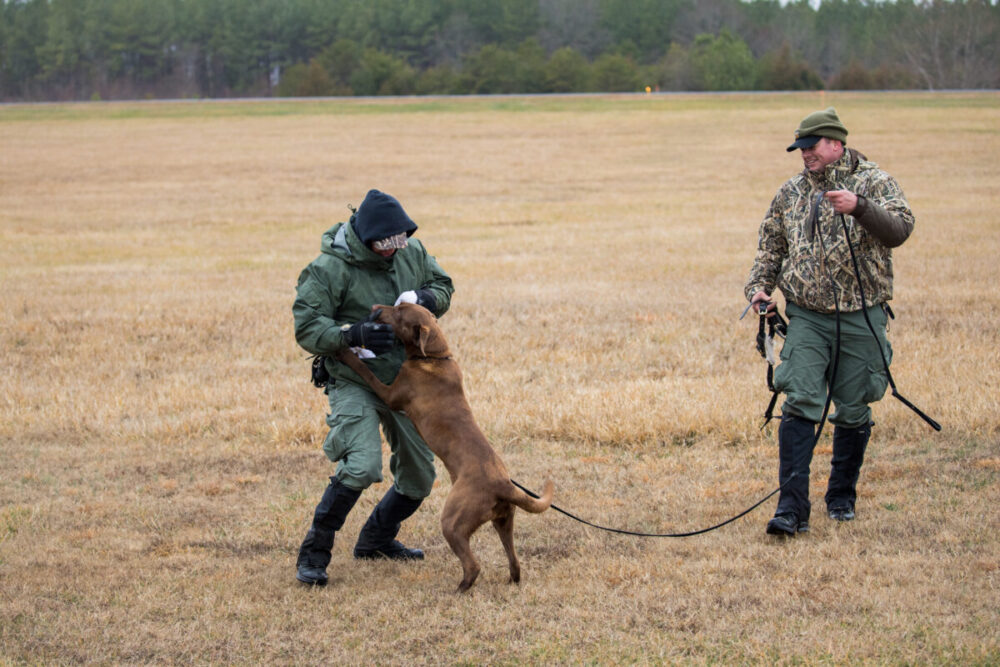
Senior CPO Wes Billings celebrated with Reese after her successful tracking exercise with handler CPO Ian Ostlund (right).
Reese, a chocolate Lab, is a big, powerful dog. CPO Ian Ostlund’s challenge is to keep up with her! “She possesses very high drive and wants to track at a very fast pace,” Ostlund said. “I told my wife that by the end of this training I’d either die of a heart attack or be in the best shape of my life! I am working very hard on proper leash-control techniques and finding a good working pace for our team—not too fast, but not so slow as to frustrate Reese.”
Reese is showing enormous enthusiasm for the job and loves the one-on-one time with Ostlund during training. “She has definitely begun to ‘learn the game,’ so to speak,” Ostlund said. “She is now very excited for her opportunities to track and is thoroughly enjoying the celebration that follows a successful track.”
Ostlund and Reese had one funny blip during training. “While on a track Reese found a nasty used baby diaper, and decided she wanted to eat it,” Ostlund said. “I found myself in an odd predicament where I needed to ensure she didn’t eat the diaper, but I certainly didn’t want to grab it from her mouth either. Thank goodness she dropped it when I yelled ‘ick, shuey!’”
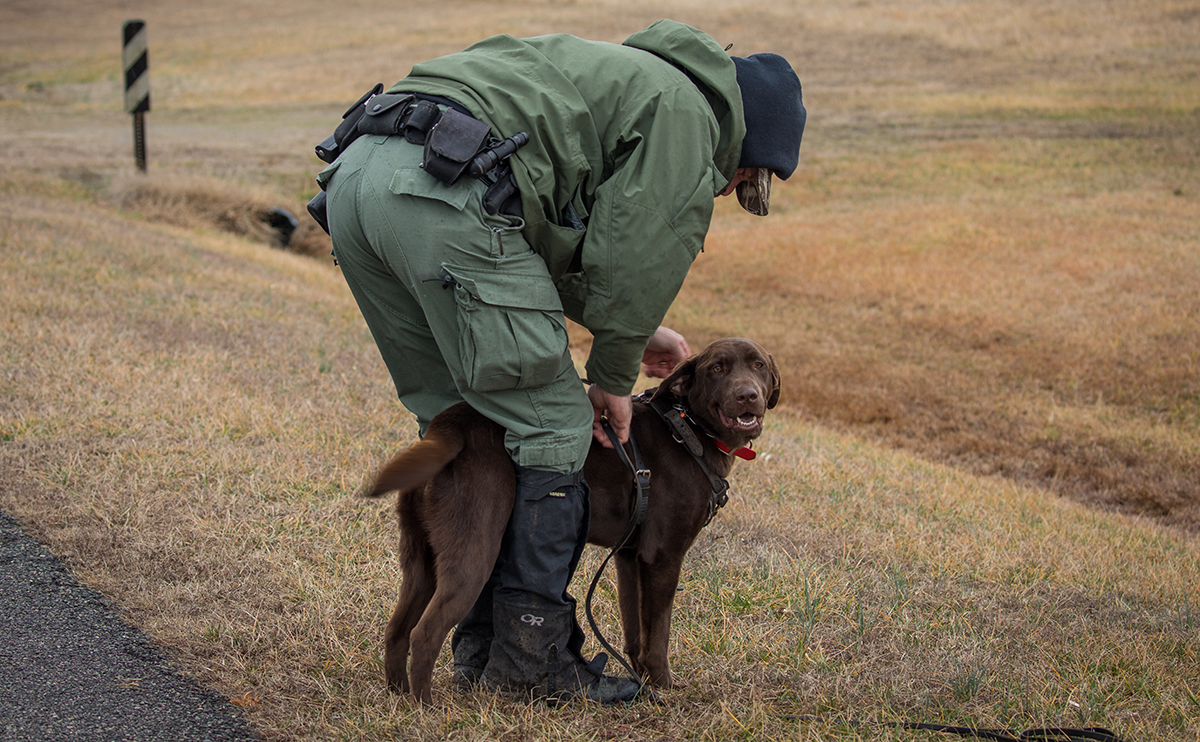
Senior CPO Wes Billings puts Molly’s tracking harness on as they prepare for an exercise.
Senior CPO Wes Billings is the only handler training who has previous experience as a K9 handler; he’s currently partnered with K9 Josie, but she is due to retire soon and Molly will take over her duties. “The first time I trained was over seven years ago with Josie,” Billings said. “This time I really understand a lot more about the training principles and how important lead control is when training a tracking dog.”
“Molly is starting to trust me as I praise her on tracks,” Billings said. “I learned to not push her too soon and let her become more sure of learning to track. Molly is doing really well with the tracking discipline we trained on this week. She is super high energy, so her obedience is still needing some improvement.”
While she needs some work on obedience, Molly excels at tracking. “Molly tracks almost like it is second nature,” Billings said. “She has a high drive to hunt and tracking is like hunting to her, with me steering and controlling the pace.”
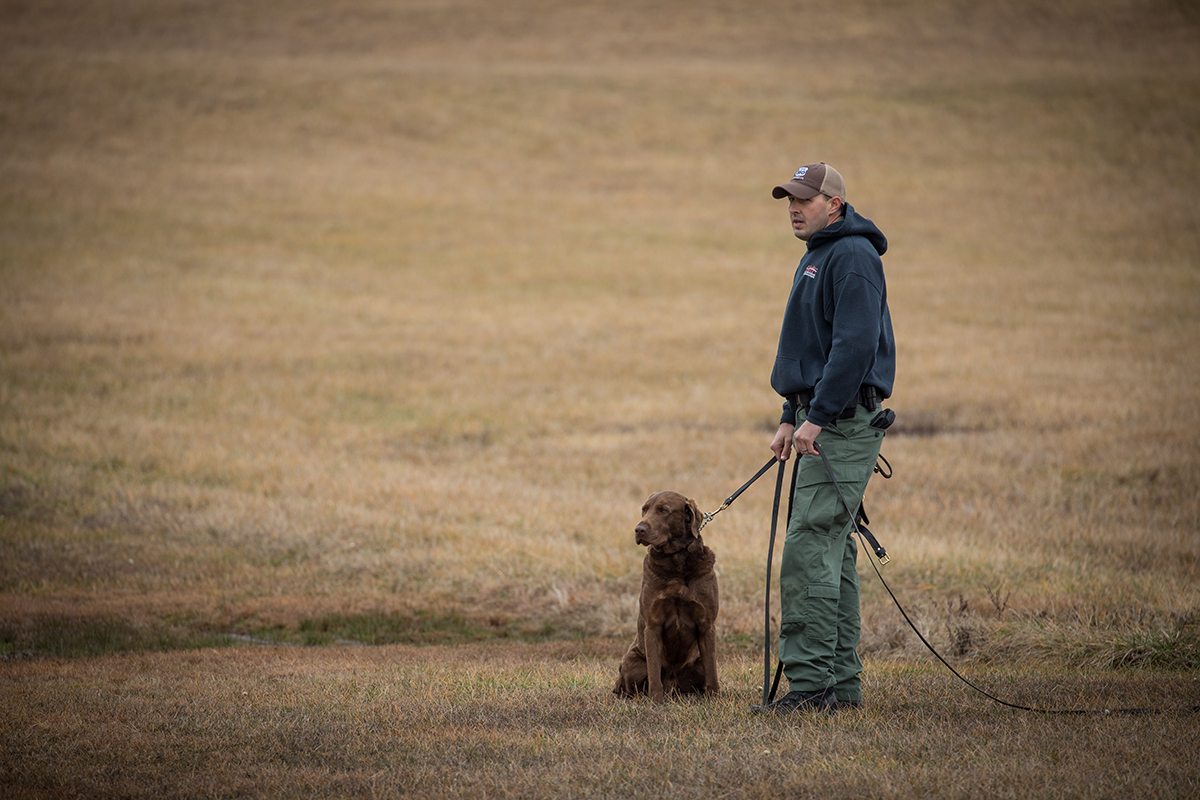
Bruno and CPO Tyler Banks wait their turn during the tracking exercises.
Bruno was a last-minute addition to the K9 training program, but he’s charmed everyone with his goofy personality. Bruno is aptly named, as the burly chocolate Lab has an imposing physical presence. CPO Tyler Blanks worked to keep up with Bruno’s enthusiasm while tracking and focused on developing a rhythm and working together as a team.
“Bruno showed strong interest and determination,” Blanks said. “He worked through heavy rain, strong winds, and learned to overcome other distractions such as farm ponds with ducks and geese. Bruno handled the training great because he has high energy and a strong drive to work for his reward. He shows interest in working, and I was able to see our progression throughout the week.”
Over the next two weeks, the K9 trainees will continue to work on tracking, with the challenges increasing in difficulty as they progress. They’ll track a hidden object, and follow tracks with more complicated routes. The handlers will learn more classroom theory. And the dogs and handlers will continue to build their relationships.
“There is a lot to learn and continue to learn,” Braziel said. “This is not a thing where we train for nine weeks, get a certificate, and then you’re done. This is non-stop training and learning for you and your K9 partner. Keeping their skills fine-tuned, and your own skills fine-tuned, is key to success!”
Do you want to support the K9s and their handlers as they continue to learn? Donate to the Ward Burton Wildlife Fund to help them achieve their goals and to assist the K9 CPOs currently serving in protecting Virginia’s people and wildlife.
Donate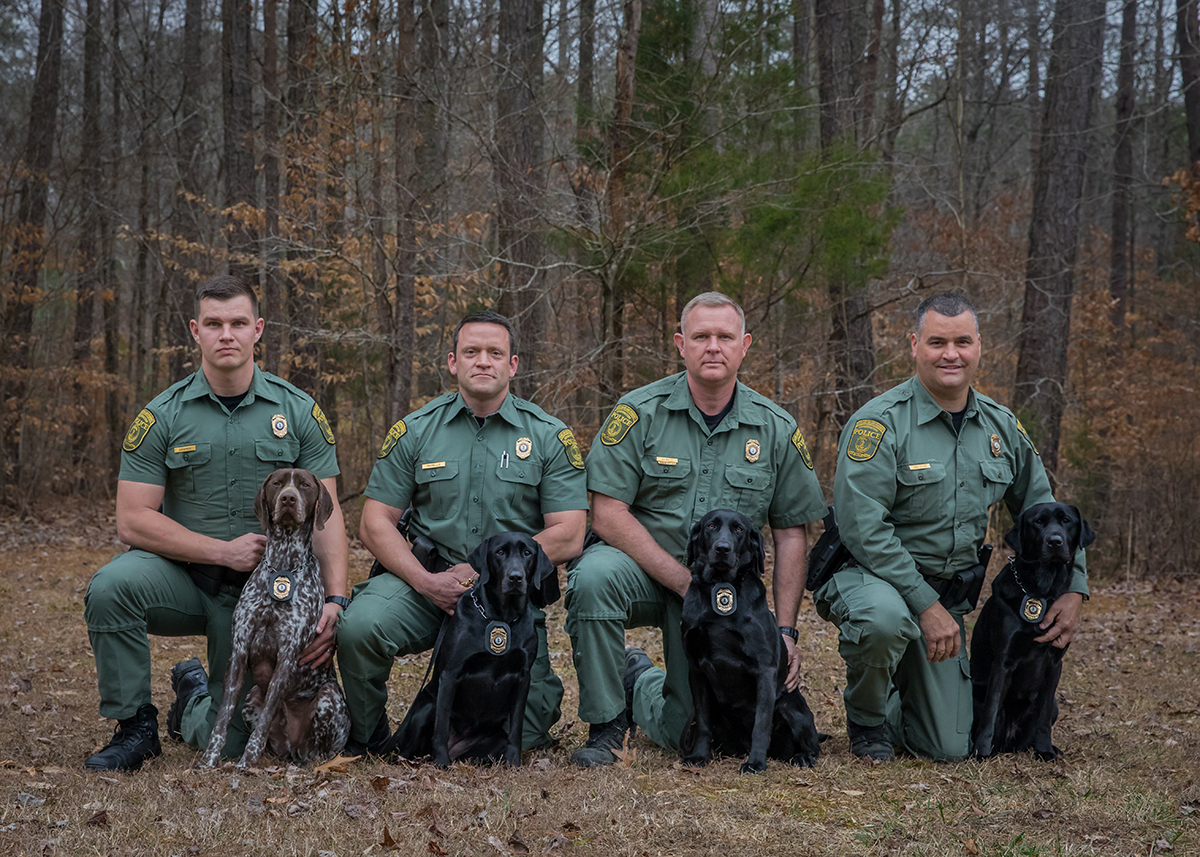
The current K9 CPOs and their handlers (from left): CPO Glenn Cramer and K9 Waylon, CPO James Patrillo and K9 Bailey, Senior CPO Richard Howald and K9 Sky, and CPO Mark VanDyke and K9 Avery.
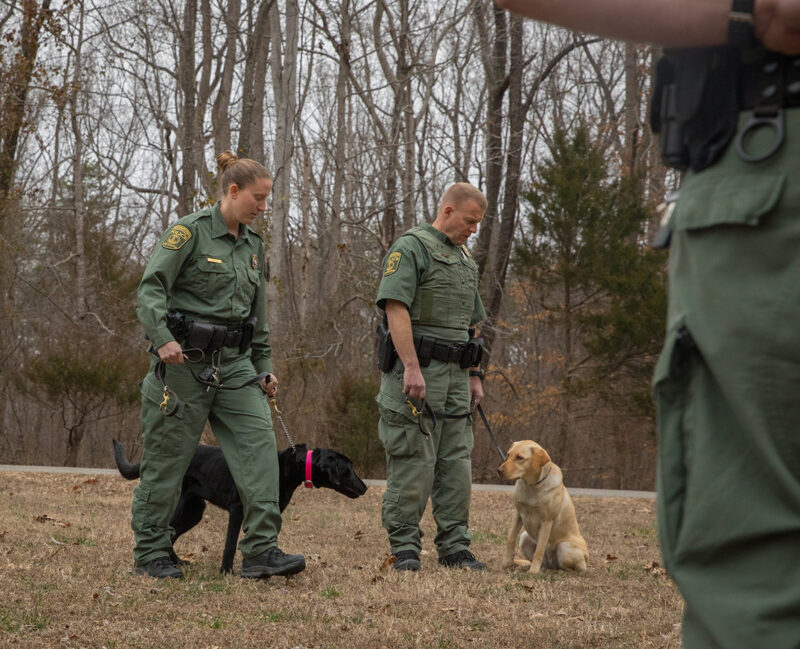
CPO Bonnie Braziel and Grace (left) walk around Master CPO Mark Diluigi and Lily as the dogs and handlers work on basic obedience.
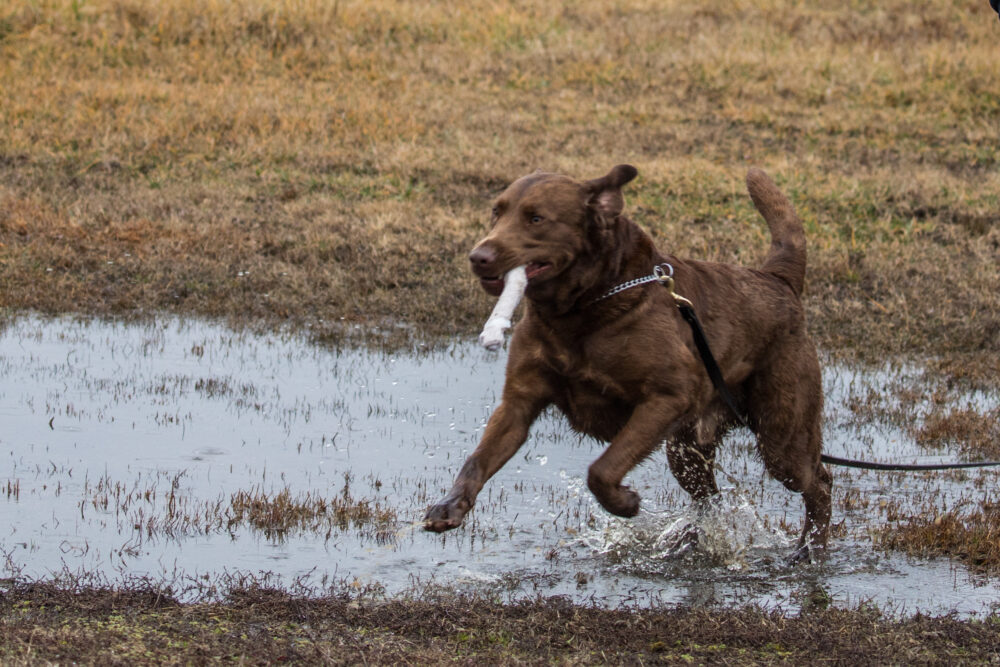
Bruno splashes through a puddle while retrieving.
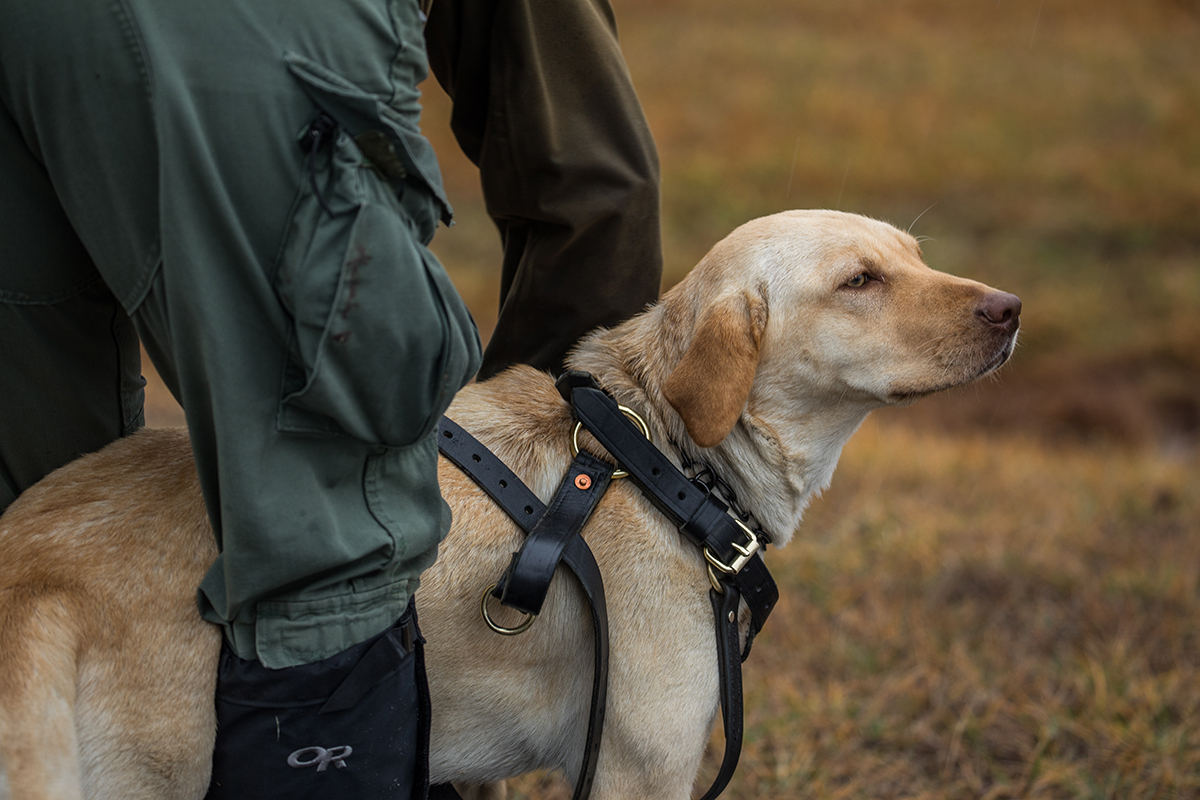
Lily waits patiently as her tracking harness is put on.
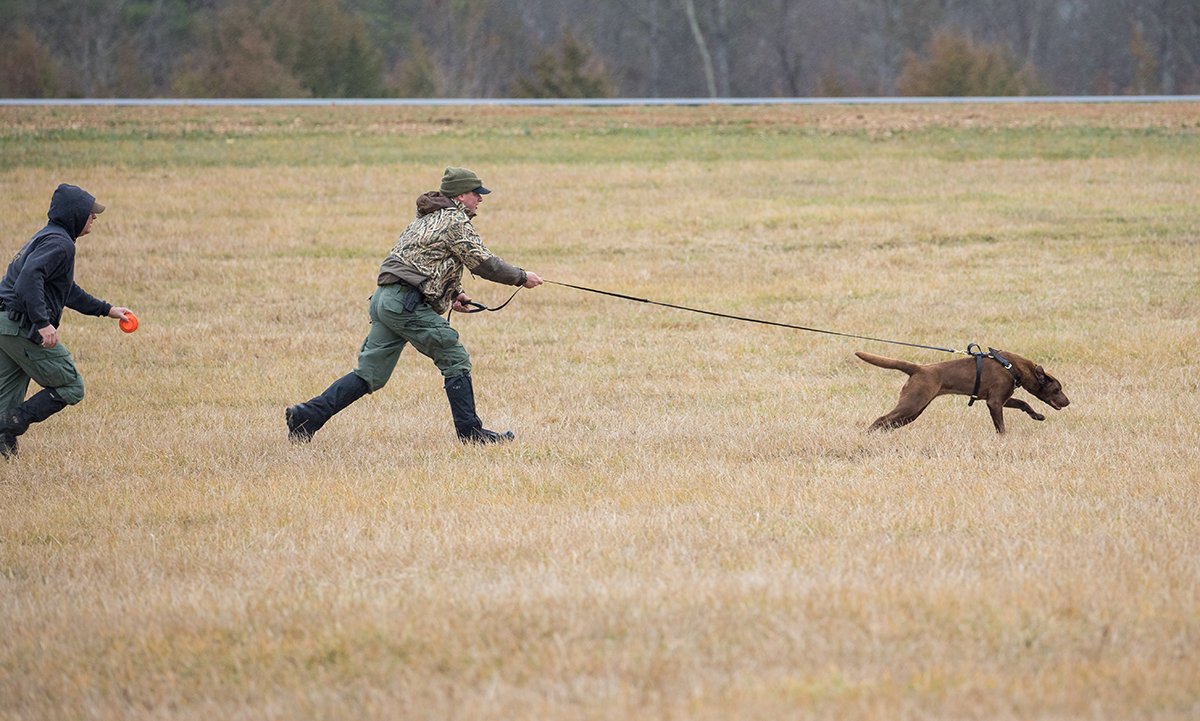
Senior CPO Wes Billings and Reese on a tracking exercise.


